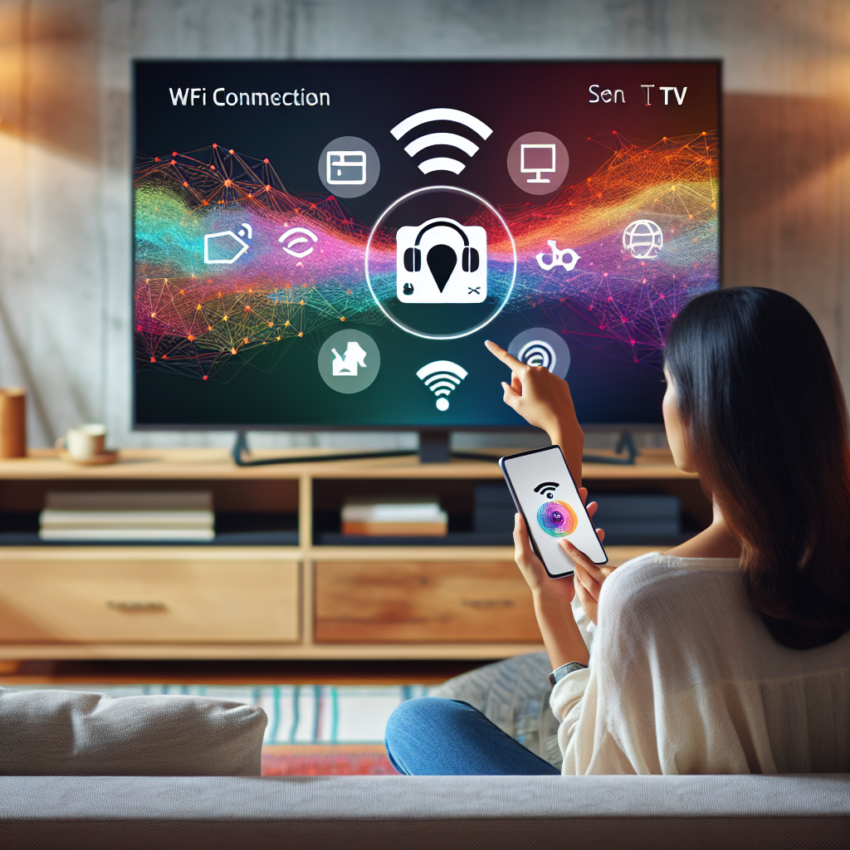Connecting your Smart TV to Wi-Fi without the remote can be both challenging and necessary, especially if you’ve lost or damaged your remote. Fortunately, there are several methods to achieve this. Here, we’ll provide detailed steps to connect your Smart TV to Wi-Fi without using the remote control.
Methods to Connect Smart TV to Wi-Fi without a Remote
Outlined below are various techniques you can use to connect your Smart TV to Wi-Fi without the traditional remote control:
1. Using a USB Keyboard or Mouse
One of the easiest methods to connect your Smart TV to Wi-Fi is by using a USB keyboard or mouse.
- Locate a USB port on your Smart TV.
- Plug in your USB keyboard or mouse.
- Use the keyboard or mouse to navigate to the TV’s settings menu.
- Find the Network settings and select your Wi-Fi network.
- Enter the Wi-Fi password using the keyboard, and connect.
Most Smart TVs support USB input devices which can serve as an effective substitute for the remote control.
Pros and Cons of Using a USB Keyboard or Mouse
| Pros | Cons |
|---|---|
| Easy setup | Requires a USB keyboard or mouse |
| Quick navigation | Might not support all TV models |
2. Utilizing a Mobile Device
Your smartphone can substitute the remote using specific applications.
- Download the respective remote control app for your TV brand. Examples include the Samsung SmartThings app or the LG ThinQ app.
- Ensure your smartphone is connected to the same Wi-Fi network you want your TV to connect to.
- Follow the app instructions to connect your smartphone to your TV.
- Use the app to navigate to the TV’s settings menu and select the Wi-Fi network.
- Enter the password to connect your TV to Wi-Fi.
This method is particularly convenient as it leverages the devices you already own.
Pros and Cons of Using a Mobile Device
| Pros | Cons |
|---|---|
| Convenient and accessible | Requires a compatible app |
| Multi-functional | Both devices need to be on the same network initially |
3. Connecting via Ethernet Cable
If the above methods are not feasible, consider using an Ethernet cable.
- Plug one end of the Ethernet cable into your Smart TV.
- Plug the other end into your Wi-Fi router.
- Navigate to the Network settings on your TV using its basic control buttons if available.
- Check if the TV automatically detects and connects using the Ethernet connection.
- Disconnect the Ethernet cable after setup, and the TV should stay connected to Wi-Fi.
This method bypasses the need for Wi-Fi configuration by using a wired connection initially.
Pros and Cons of Using an Ethernet Cable
| Pros | Cons |
|---|---|
| Stable connection | Limited to the length of the cable |
| Bypasses Wi-Fi configuration | Requires additional hardware |
4. Using Universal Remote Control
A universal remote control can also serve as an alternative.
- Purchase a compatible universal remote control for your Smart TV brand.
- Follow the instructions to pair the universal remote with your Smart TV.
- Use the universal remote to navigate to Wi-Fi settings on your Smart TV and connect accordingly.
Universal remotes are often versatile and support multiple TV brands and functions.
Pros and Cons of Using a Universal Remote Control
| Pros | Cons |
|---|---|
| Versatile and multifunctional | Additional cost |
| Easy replacement for lost or damaged remotes | Requires pairing |
5. Accessing TV Buttons
If your Smart TV has buttons on the frame, you can use them to access the settings.
- Locate the physical buttons on your Smart TV. These might include the power, volume, and menu buttons.
- Use these buttons to navigate to the TV settings menu.
- Find the Network settings and select your Wi-Fi network.
- Enter the Wi-Fi password using available buttons or an onscreen keyboard.
This is a simple method but may vary depending on your TV model and its button functionalities.
Pros and Cons of Using TV Buttons
| Pros | Cons |
|---|---|
| No extra devices needed | Limited to button functionality |
| Cost-effective | Buttons might not support navigation |
Conclusion
Connecting your Smart TV to Wi-Fi without the remote is achievable through various methods such as using a USB keyboard or mouse, mobile device, Ethernet cable, universal remote control, or the TV’s physical buttons. Evaluate each method’s pros and cons to determine the best approach for your situation. Each of these solutions ensures that you maintain uninterrupted access to your favorite streaming services and Smart TV features.

